|
The Turn Of The Century Electrotherapy
Museum
http://www.electrotherapymuseum.com
(C) Jeff Behary 2010 jeff_behary@hotmail.com
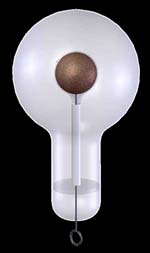
Tesla
Bulbs
Here are a
series of experiments done with early Mazda and Edison lamps - burnt out
bulbs and broken filament lamps.
Phosphorescence and Bombarding of lamp filaments. For these
experiments, the bulb was simply held in the hand near the coil.
No direct connections with the secondary coil were made.
Most of these experiments start off producing X-Rays, so much care must
be taken in reproducing these tests.
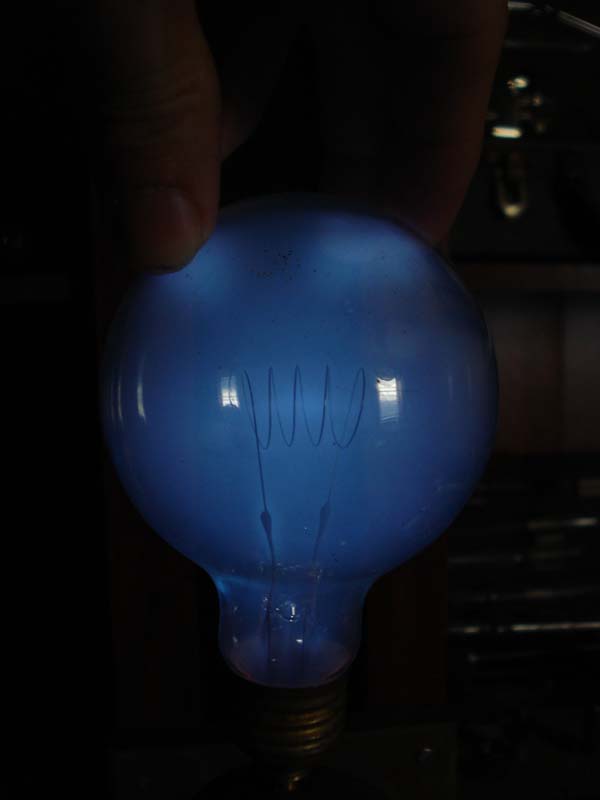
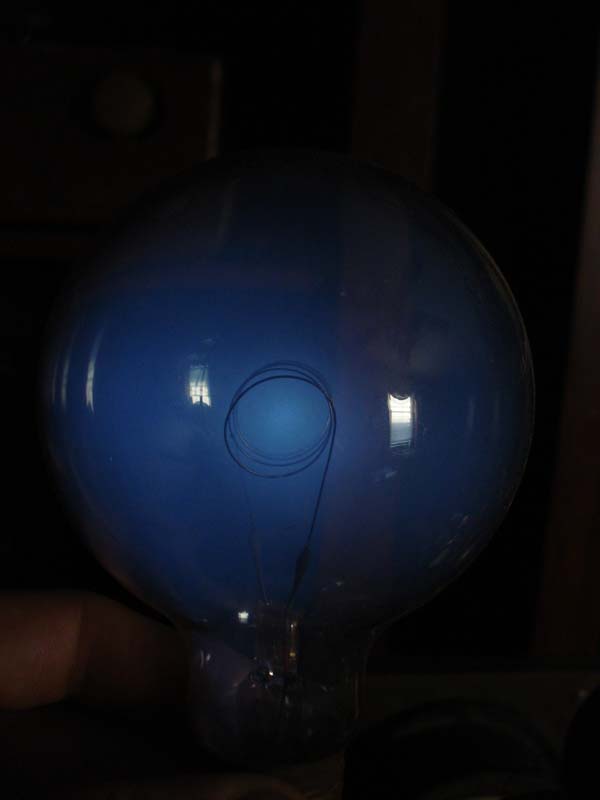
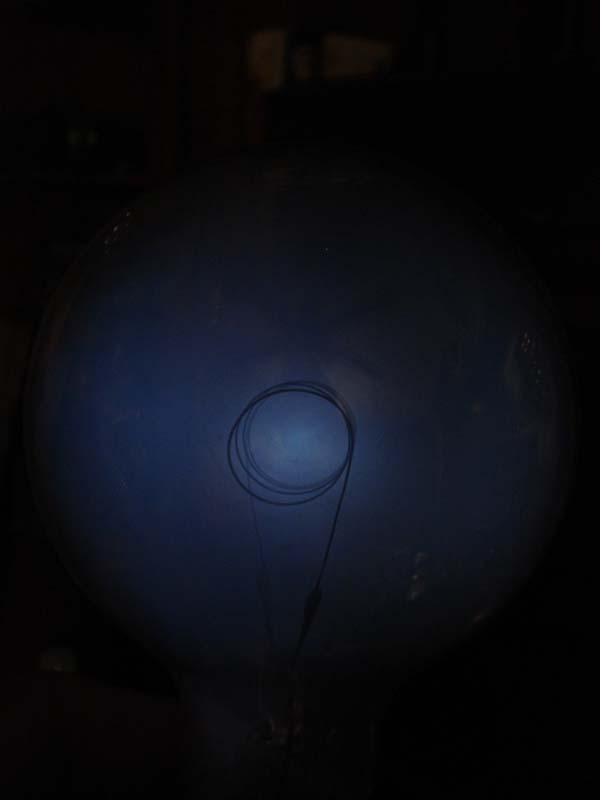
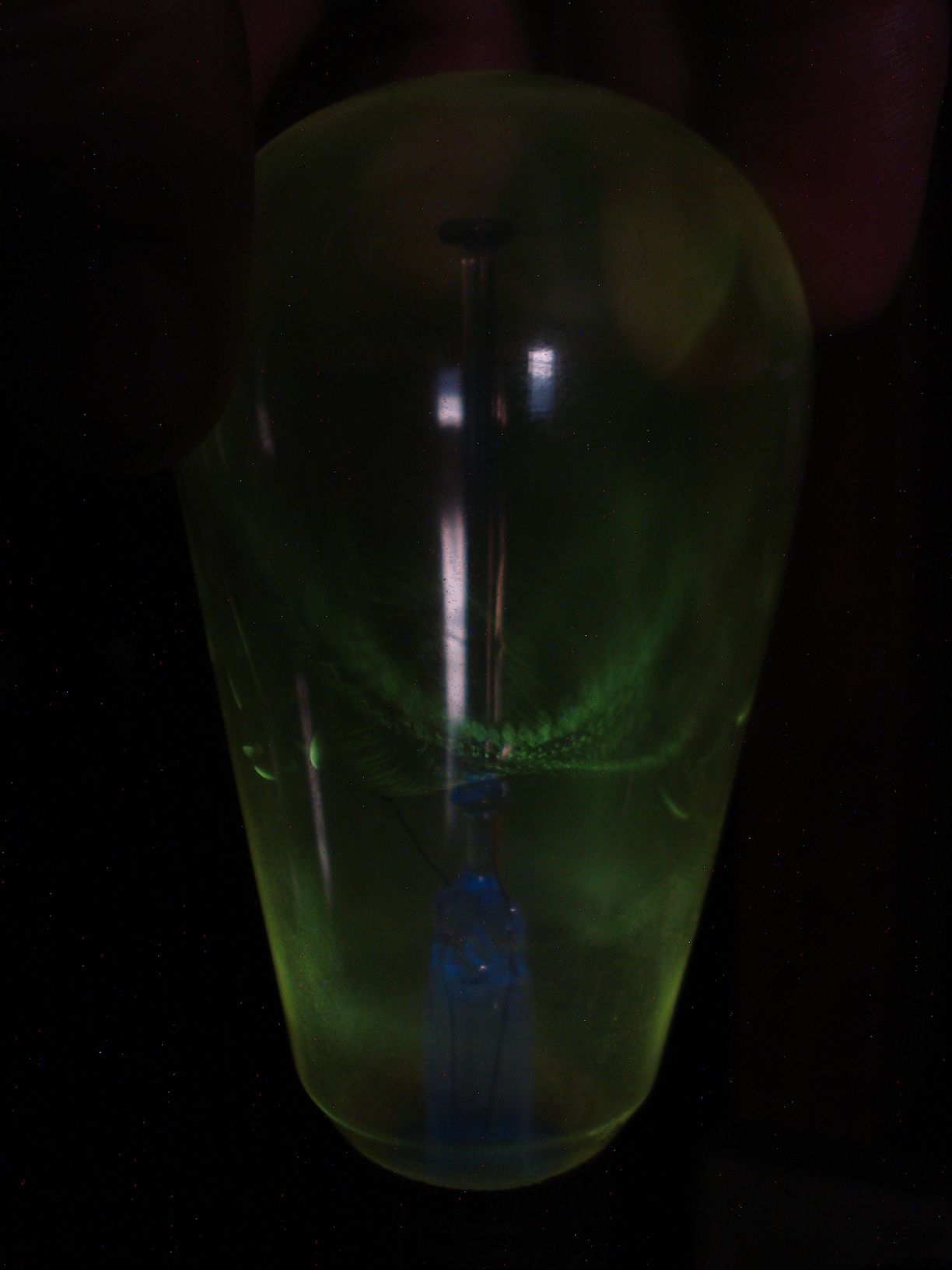
This lamp has a broken filament that whirls around when operating.
Rotating Filament!
Click here for a movie!
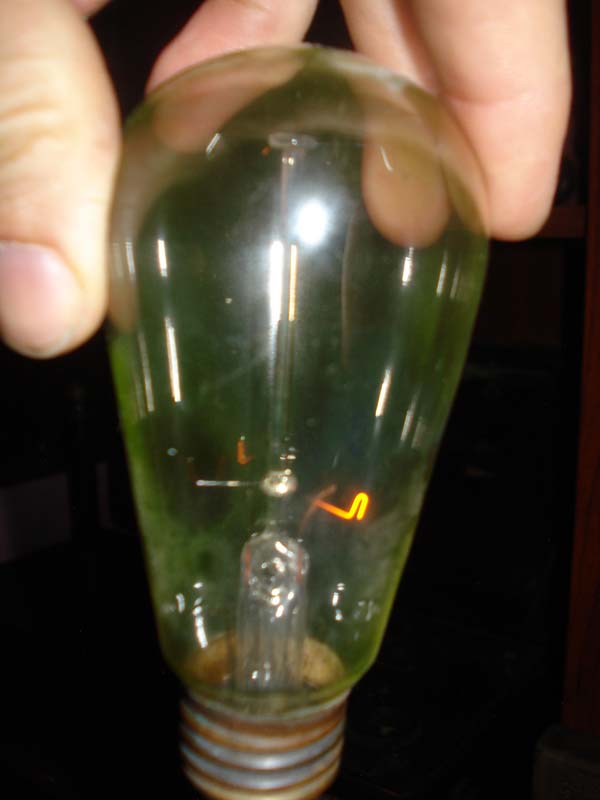
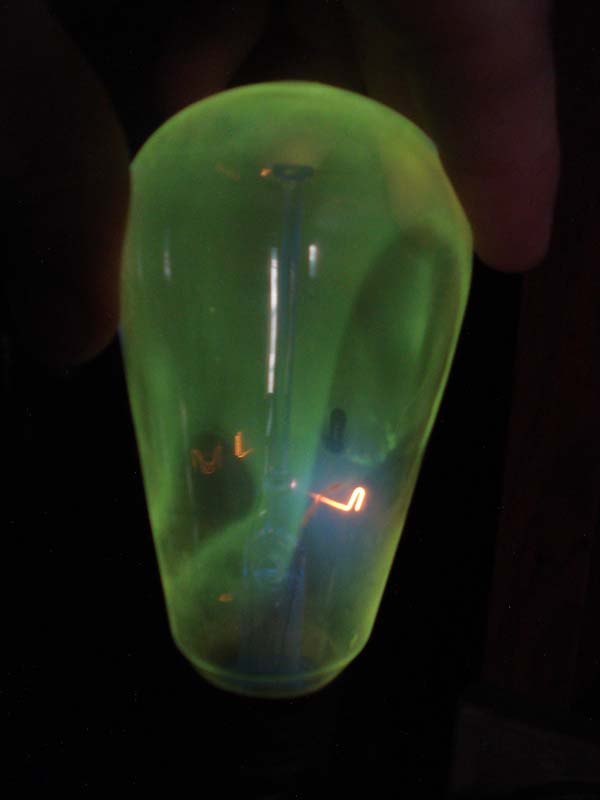
Not only portions of the filament light but also the supporting wires.
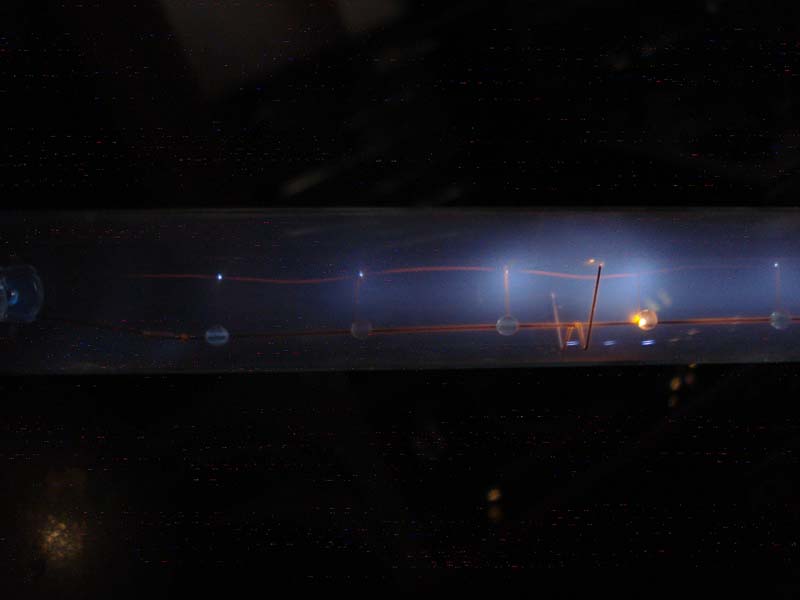
Here a straight filament lights slightly.
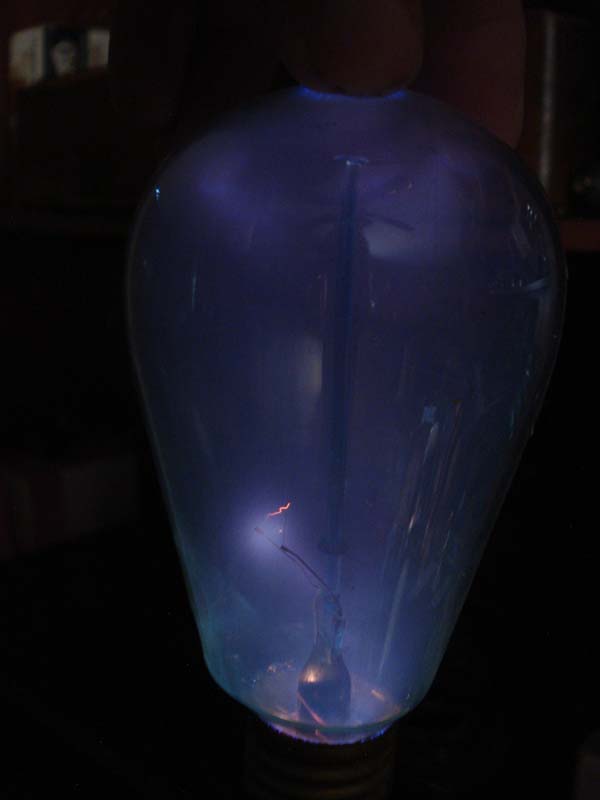
This vacuum level is inbetween a Crookes tube and an X-Ray tube.
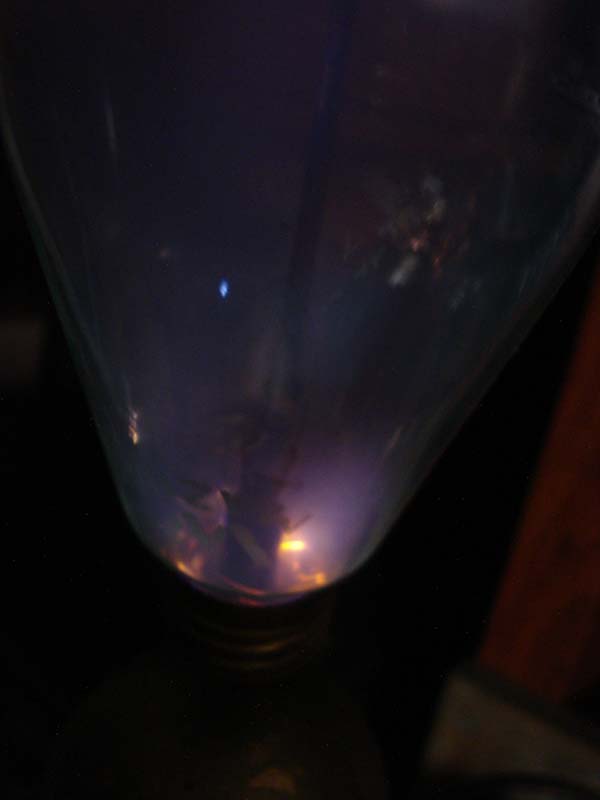
Broken off filament pieces lighting in the base of the lamp!
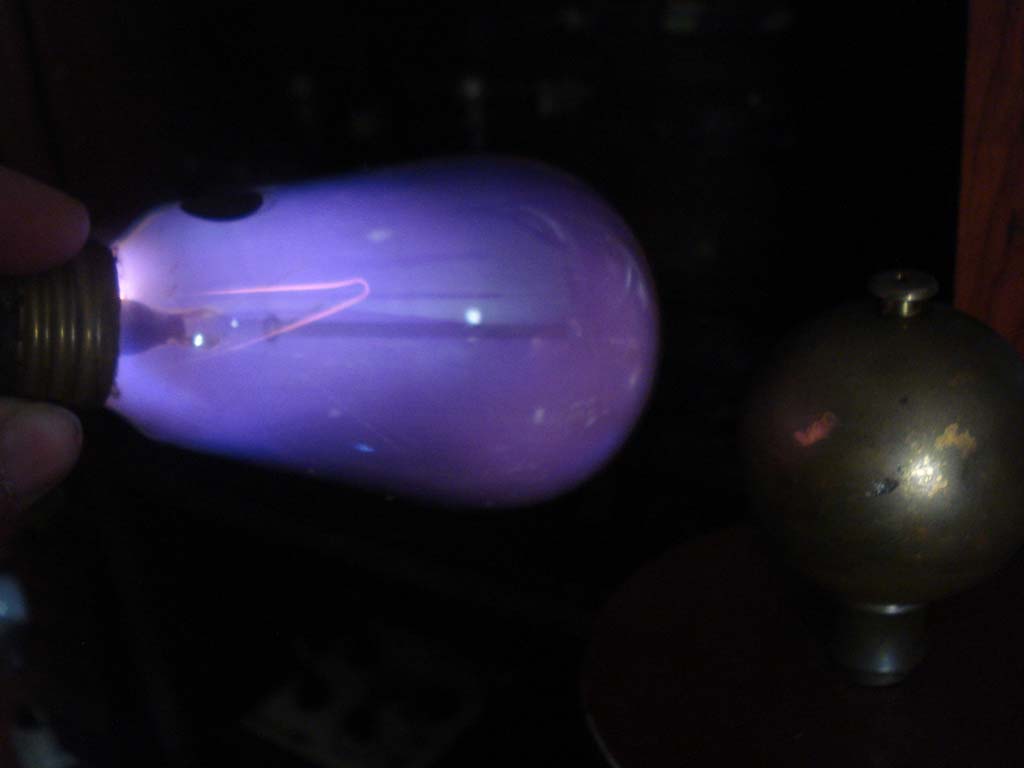
The vacuum has now been reduced to just under the Crookes level.
It is not to the Geissler stage, but a general bright
phosphorescence occurs inside, like a misty cloud.
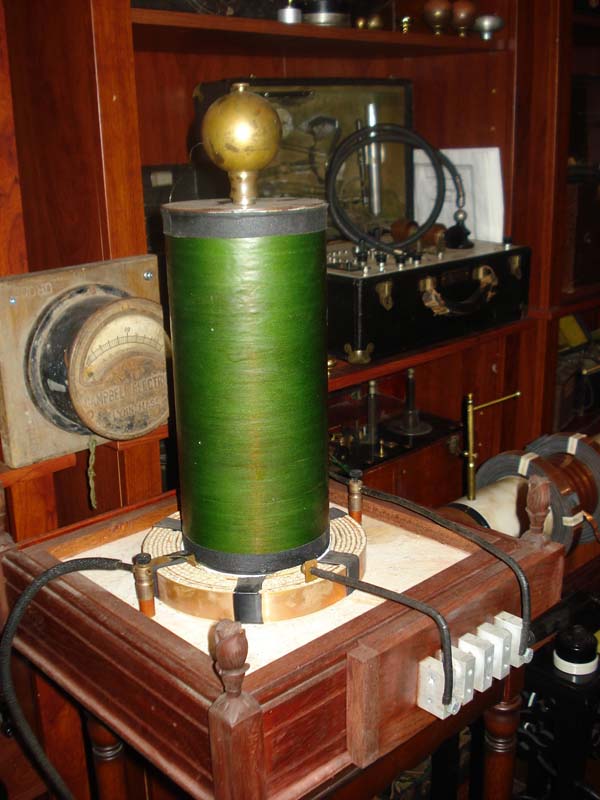
Coil used for experiments - based on work of Thomas Stanley Curtis
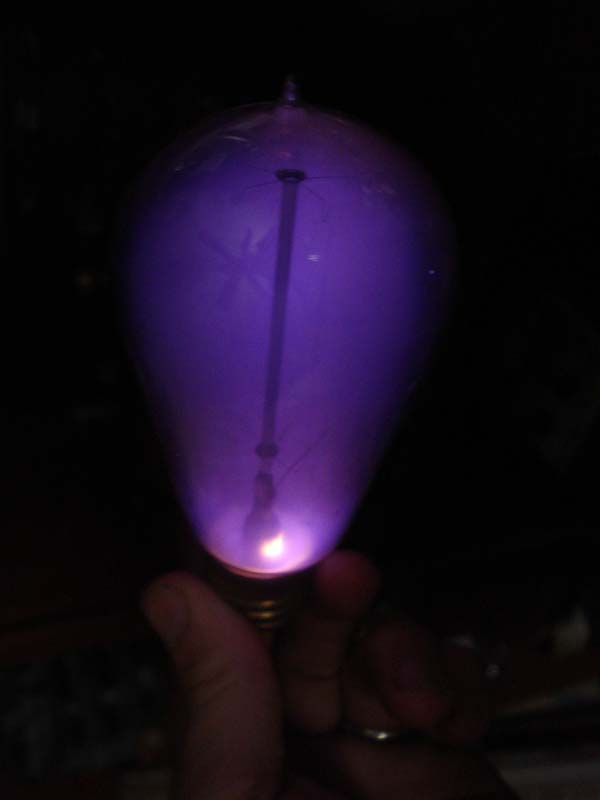
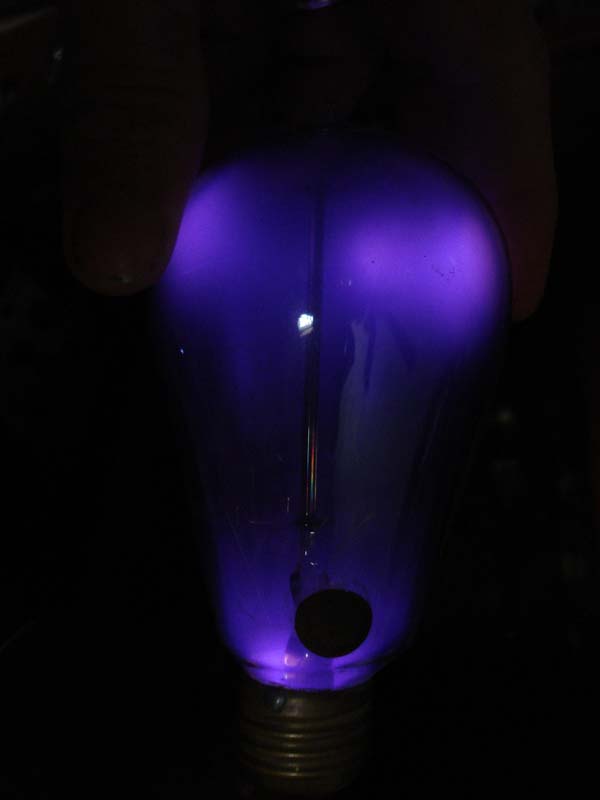
Approaching the Geissler vacuum.
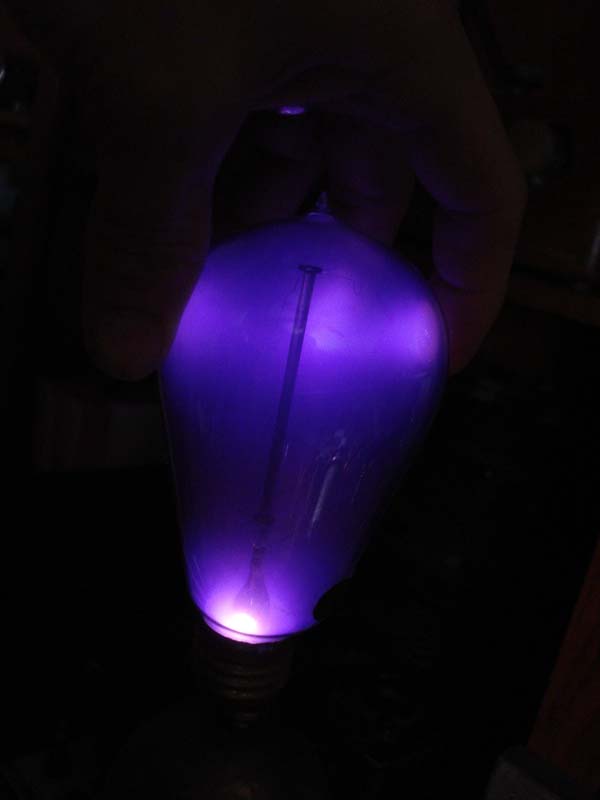
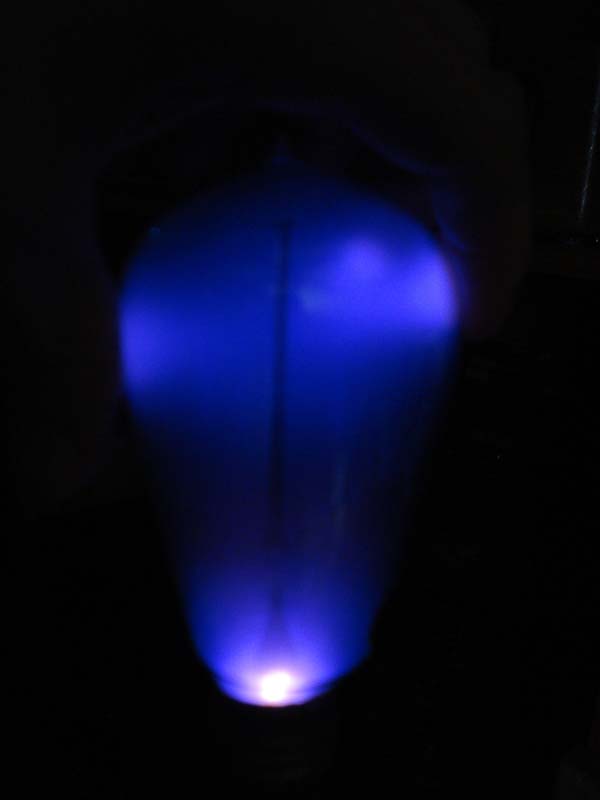
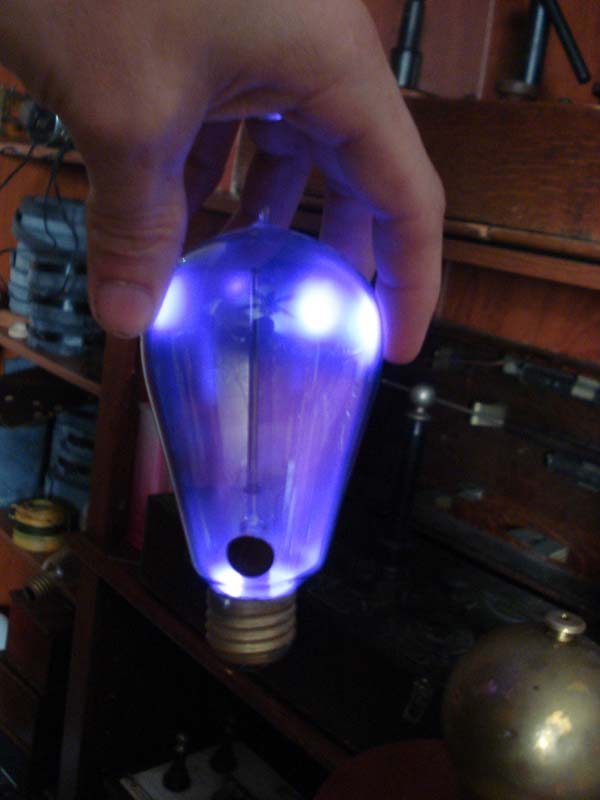
During these stages bright luminous spots appear in the bulb.
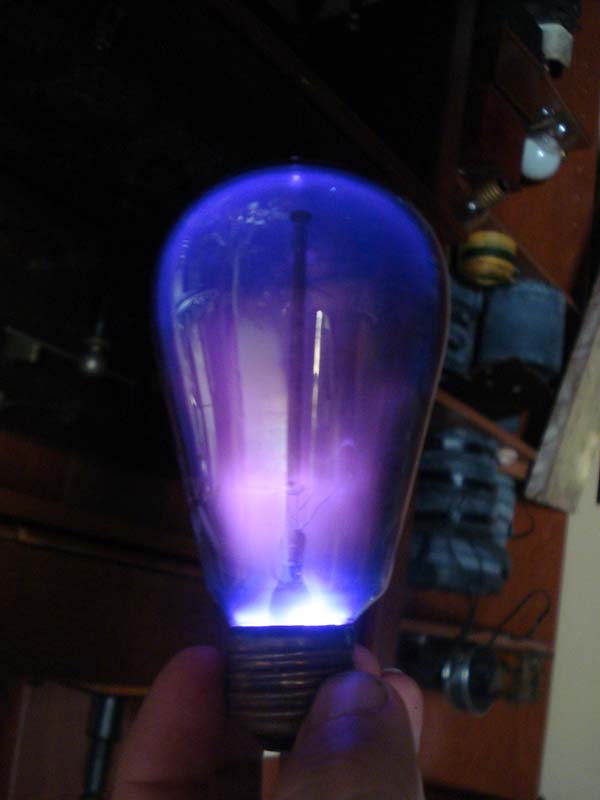
The broken filament in the bottom is really getting hot!

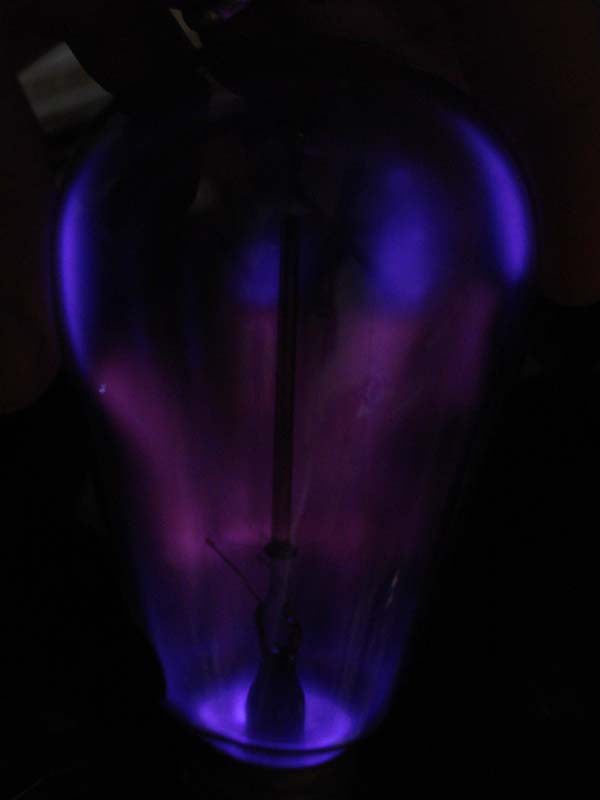
At this point suddenly the vacuum has become higher.
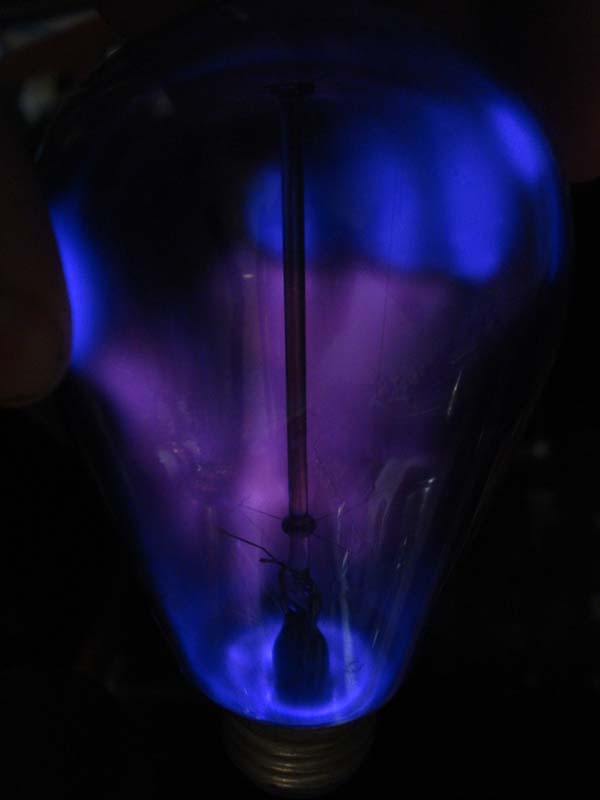
This phosphorescence is now confined to near the glass walls.
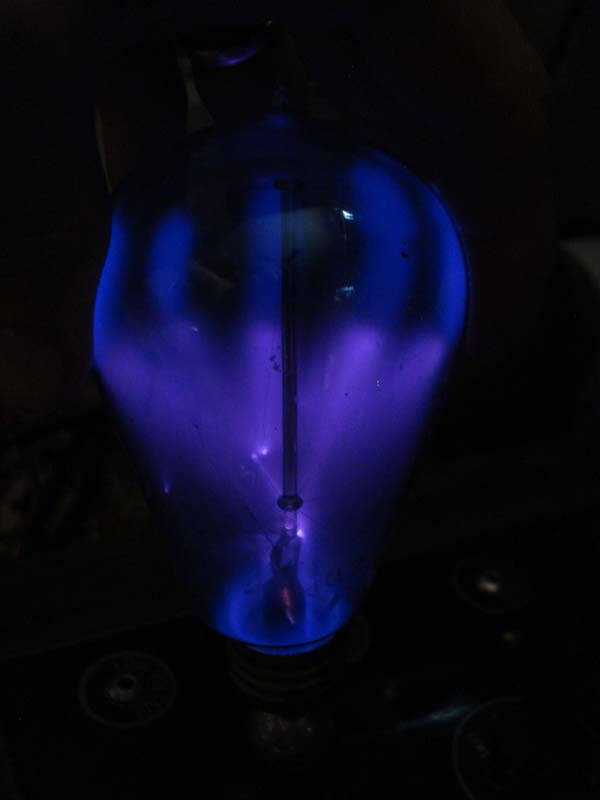
But my fingers are getting close to the broken filament pieces on the
internal part of the bulb - and this last stages show a tiny puncture in
the glass. The vacuum has been reduced to a stage inbetween Geissler and
Crookes levels, but slowly is reduced to a Geissler vacuum in the next
minutes.
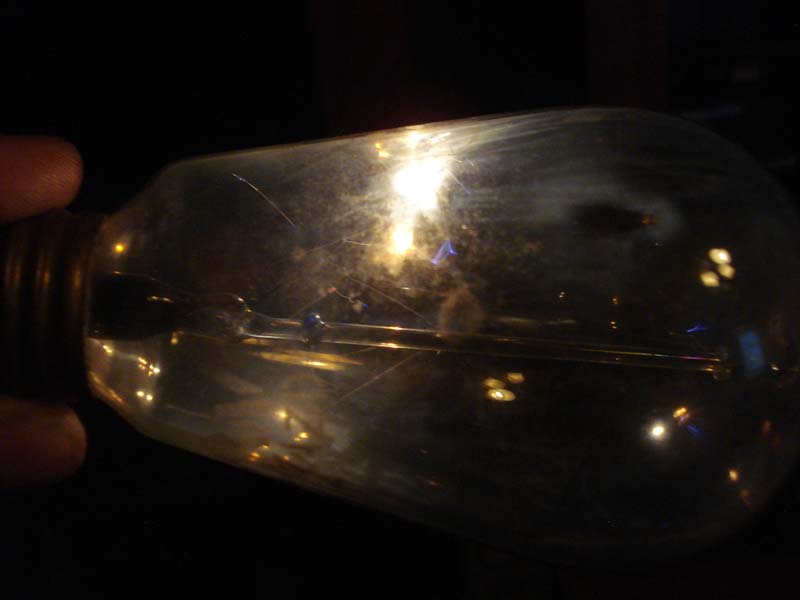
The puncture took over. Parts of the filament light brightly when
held near coil - inside contents are now normal atmosphere.
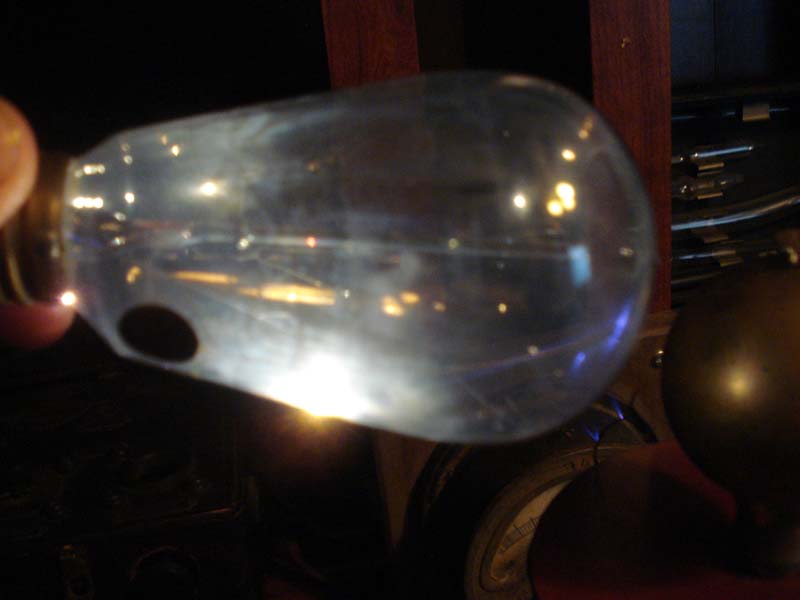
BOOM! seconds later.
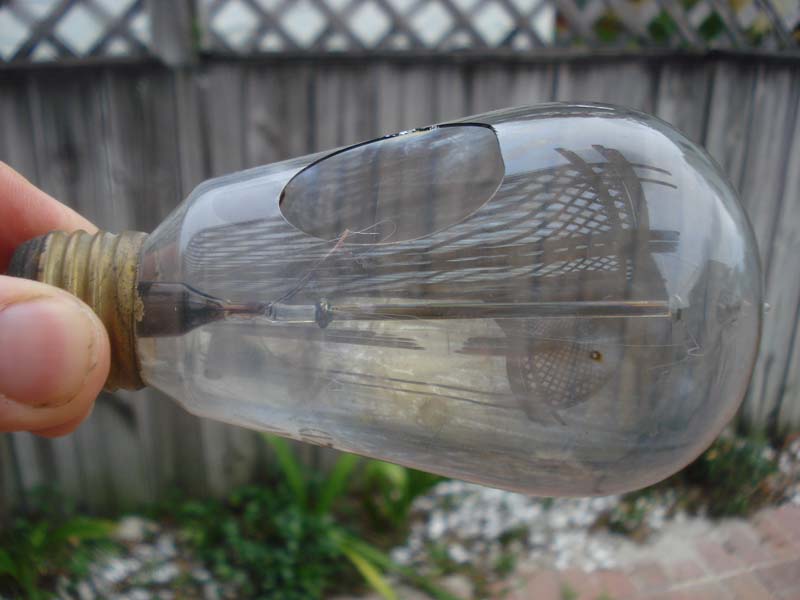
Bulb implodes/explodes.
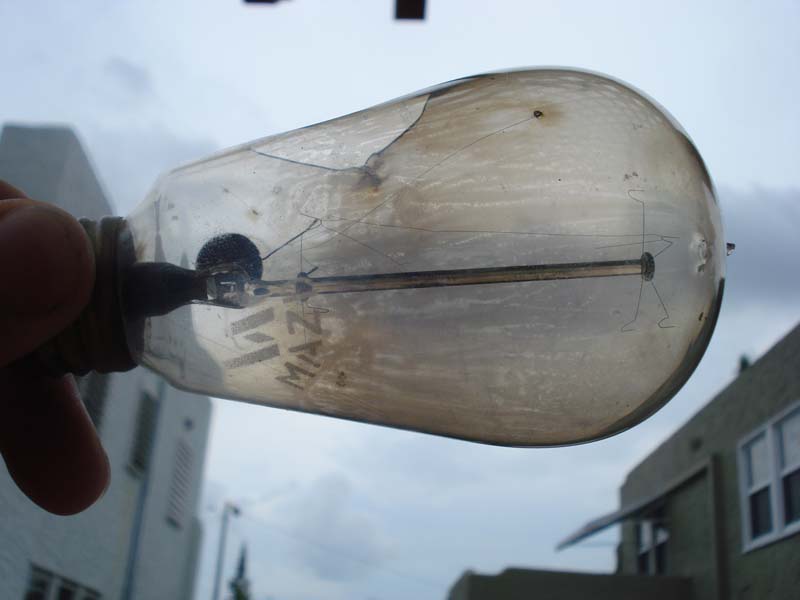
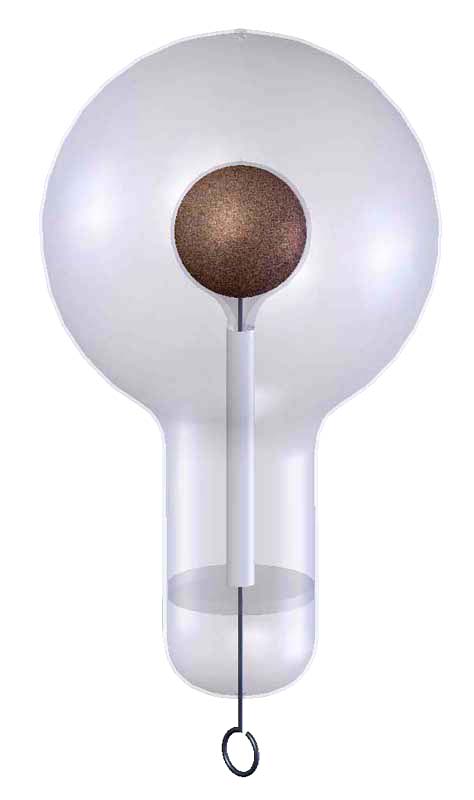 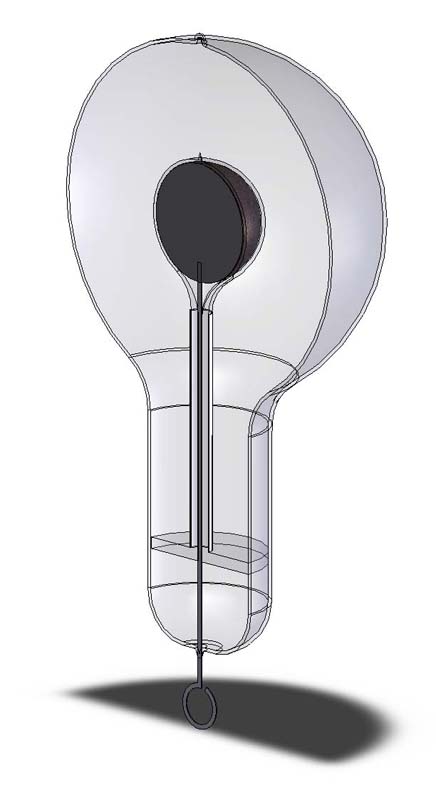
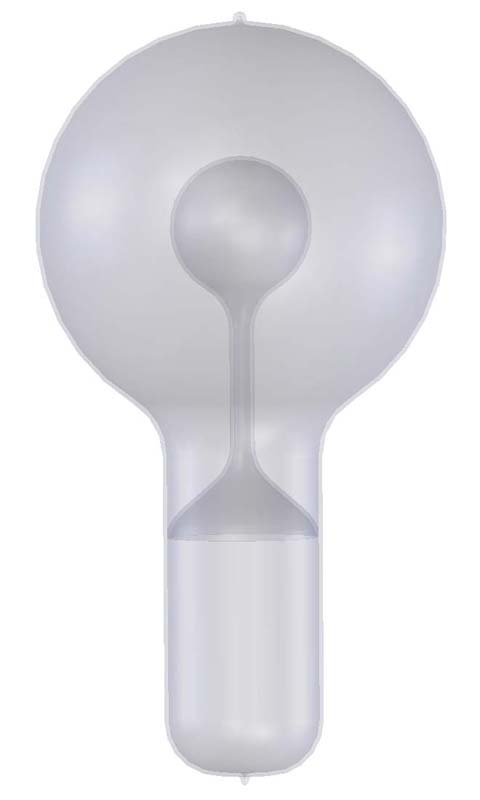 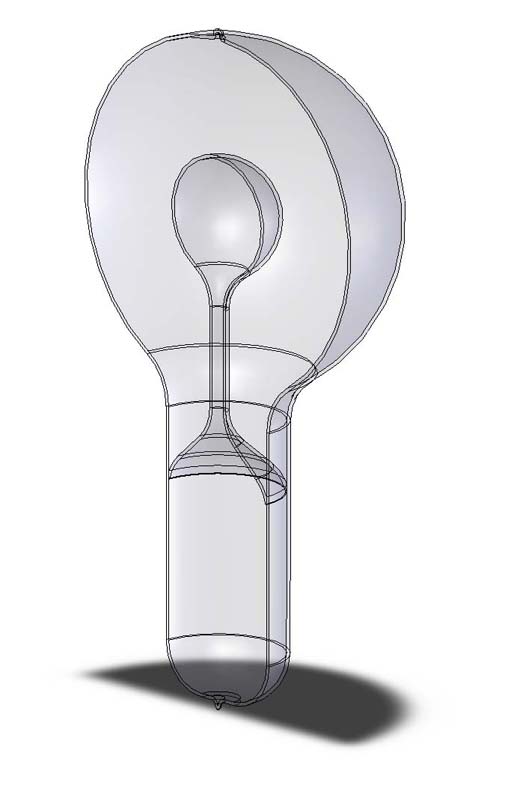
From Tesla Lecture - Fig 141 and 142
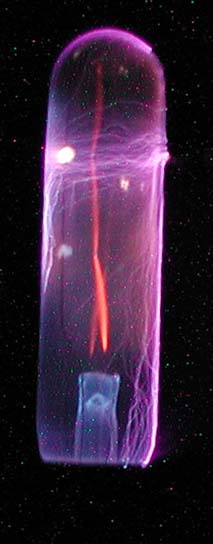 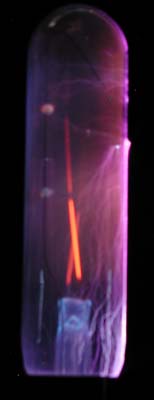
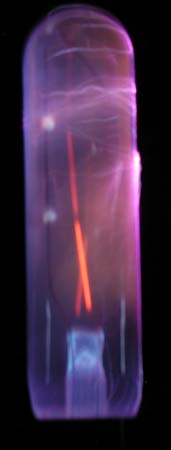
Single filament tests done in 2004
(C) Jeff Behary, 2010
|